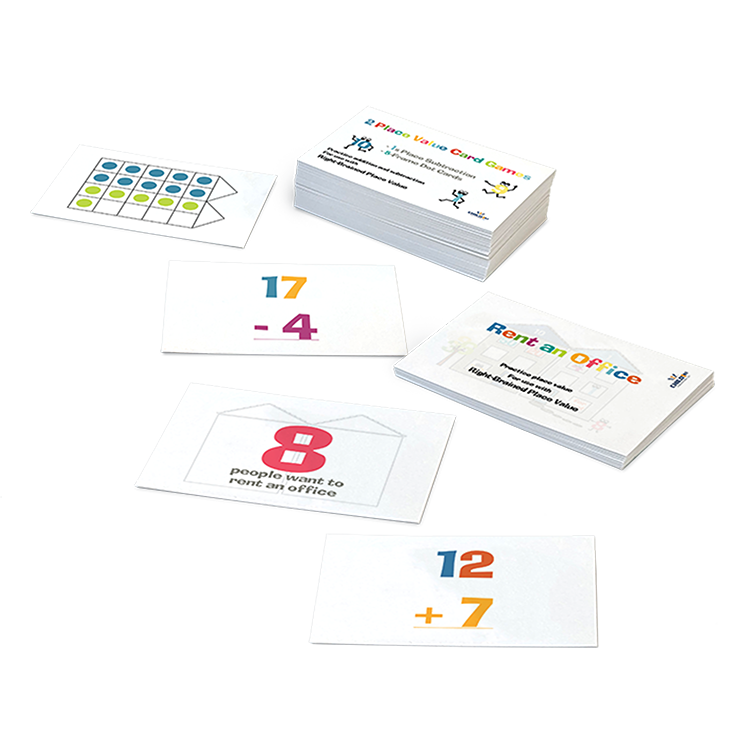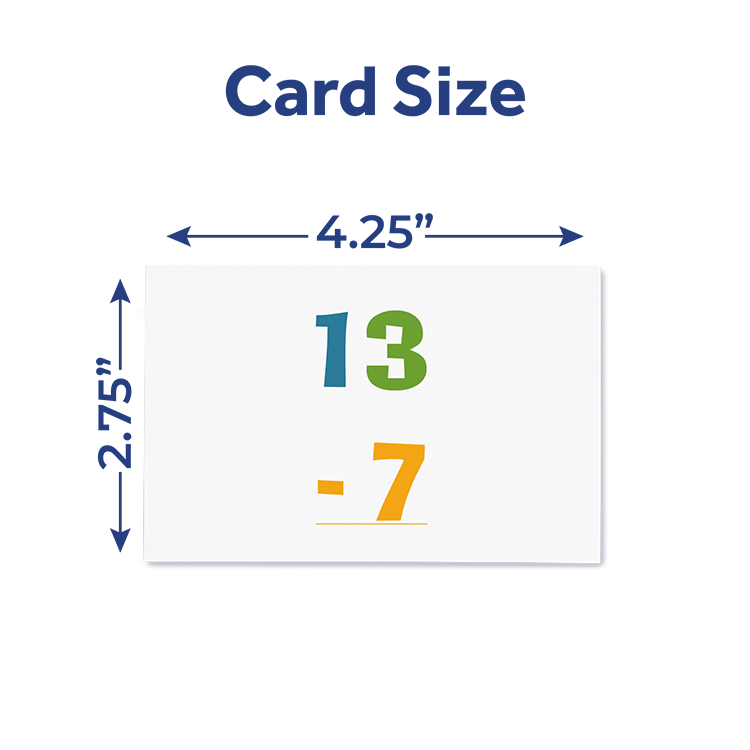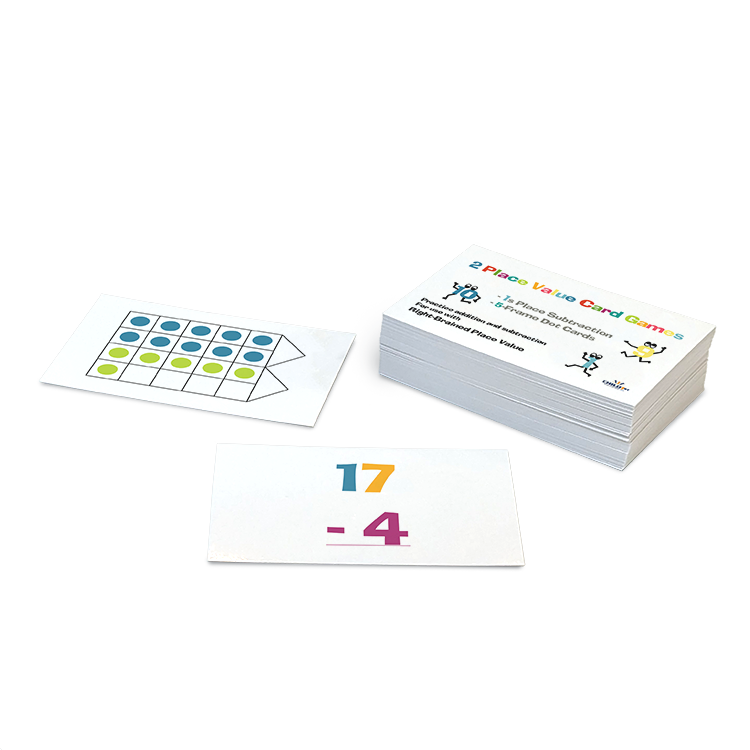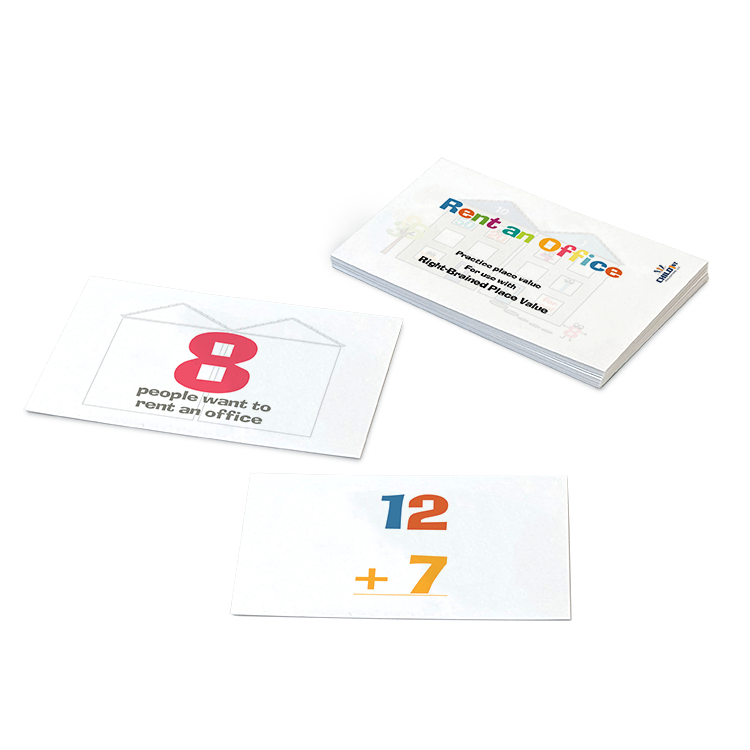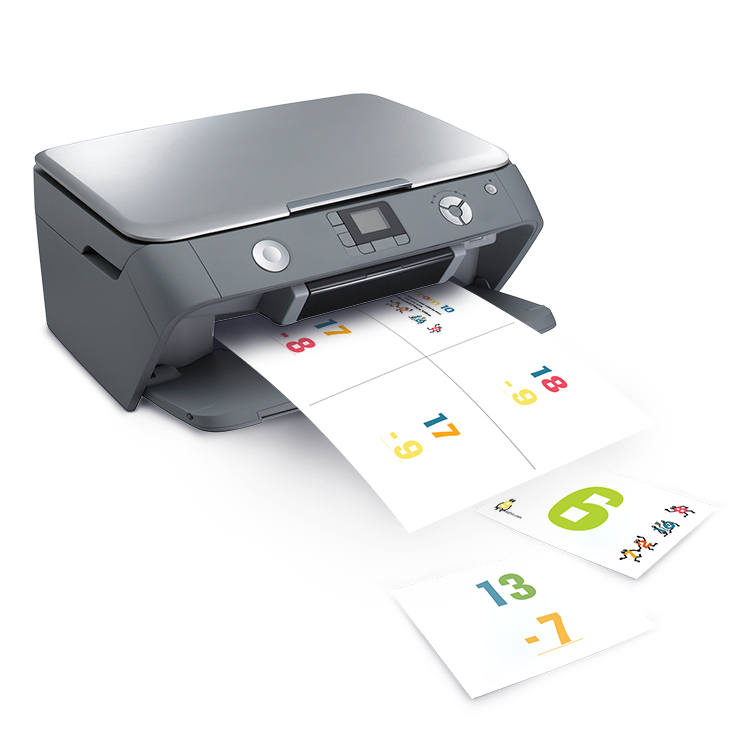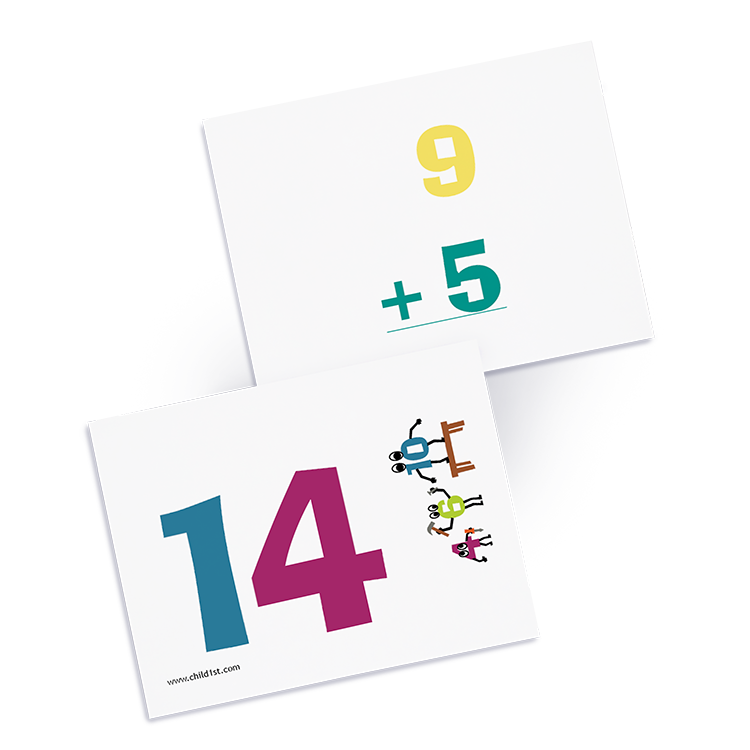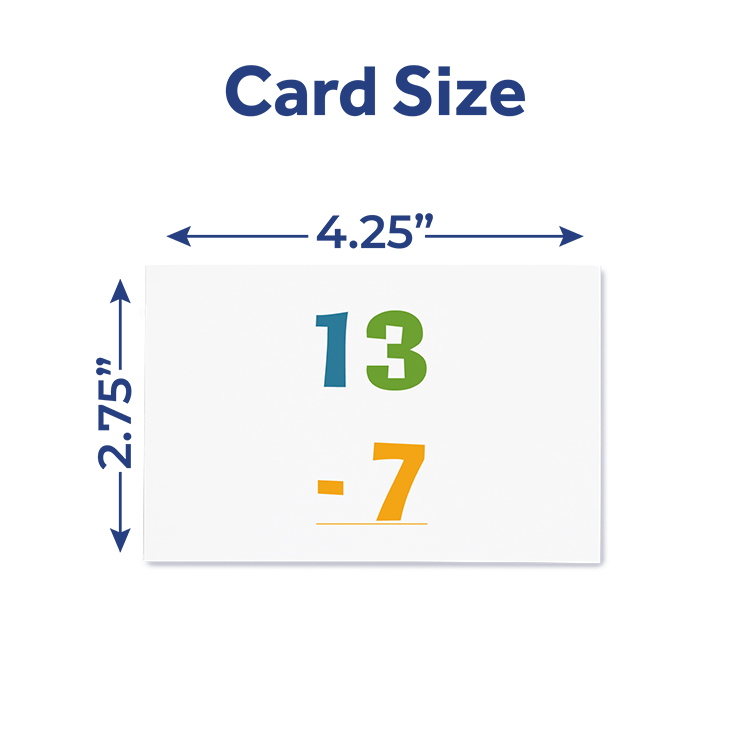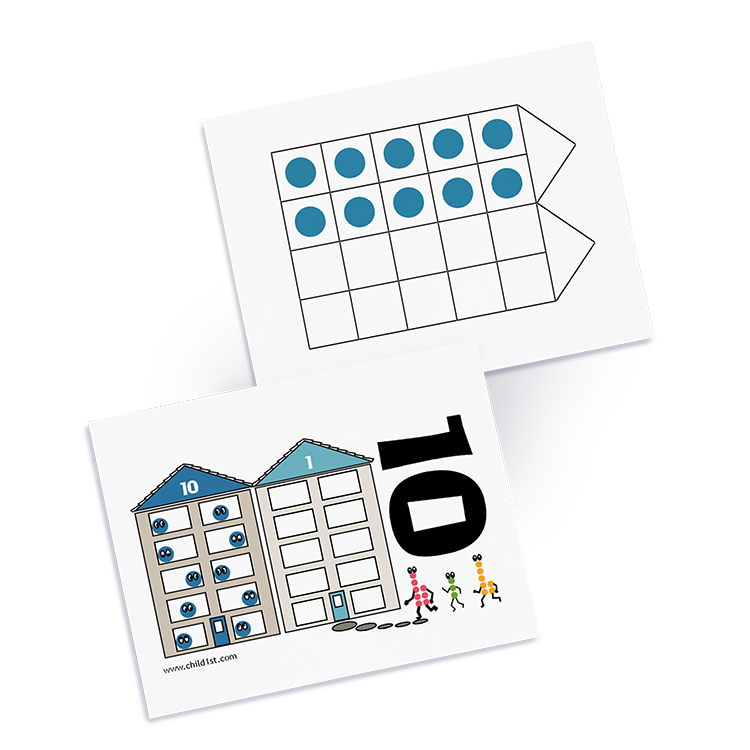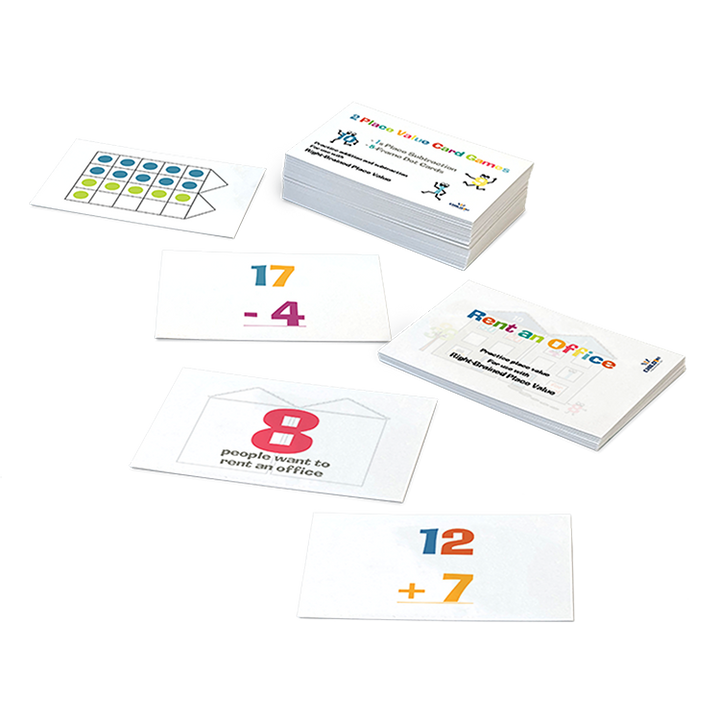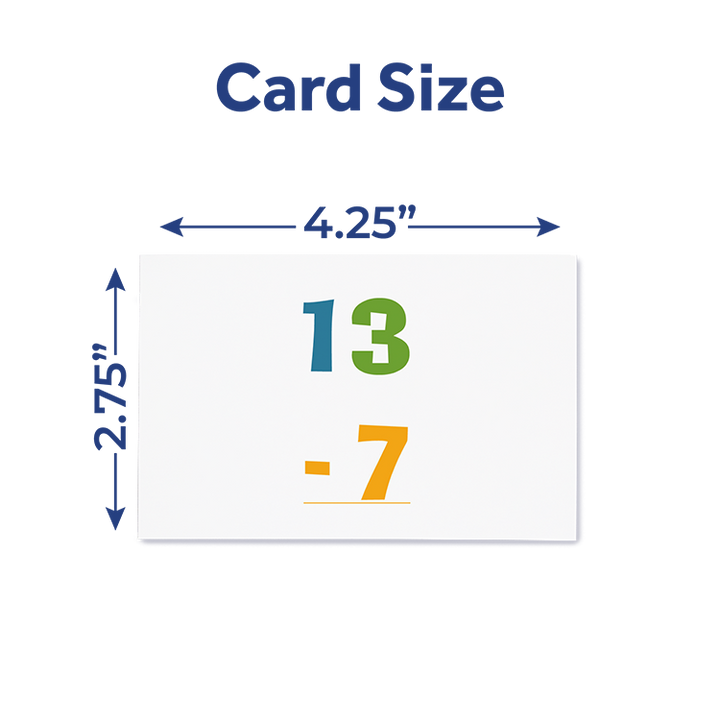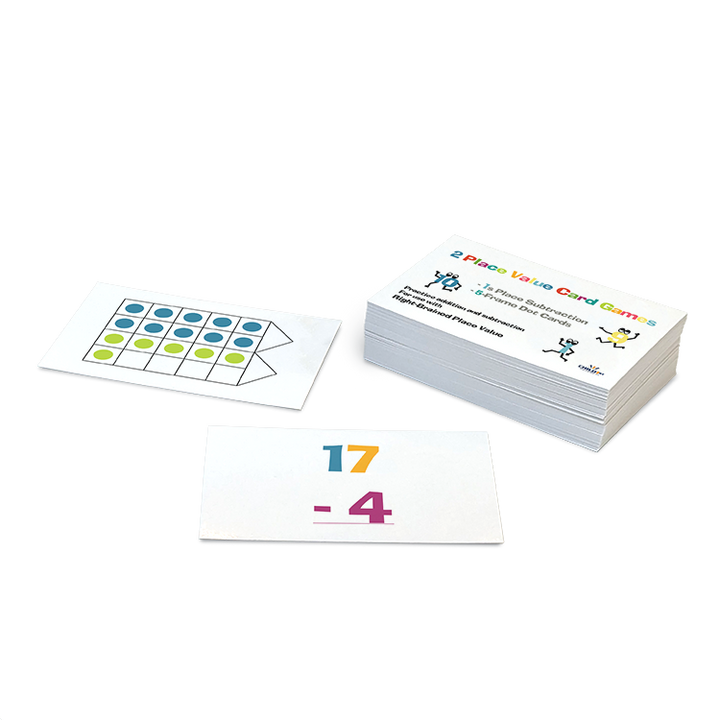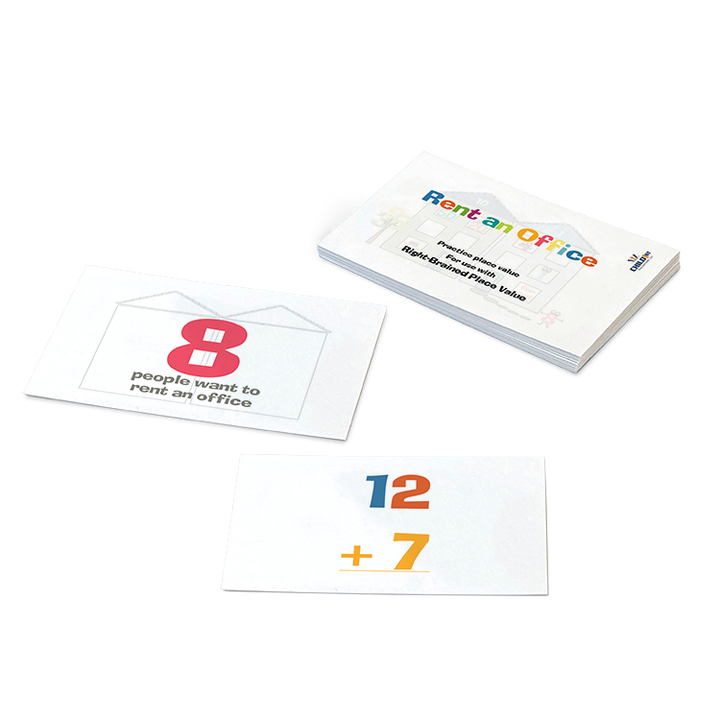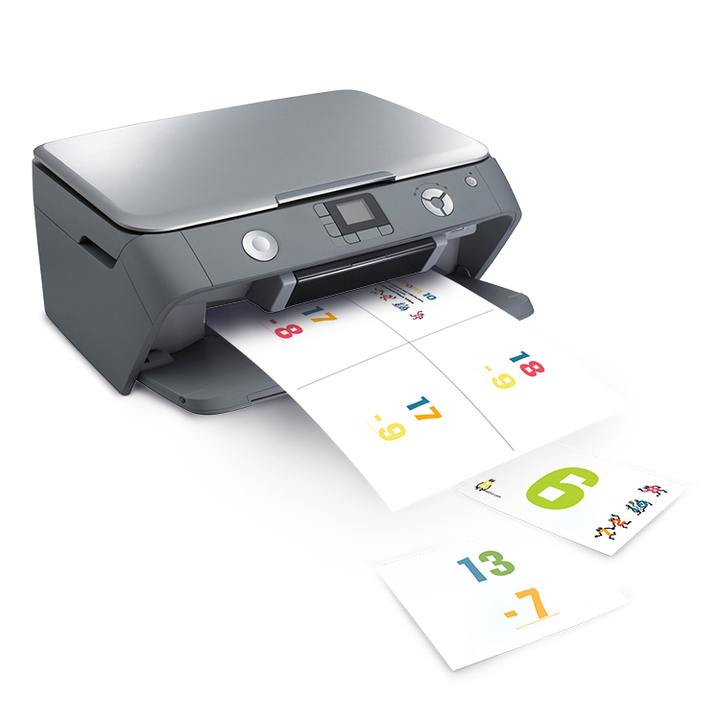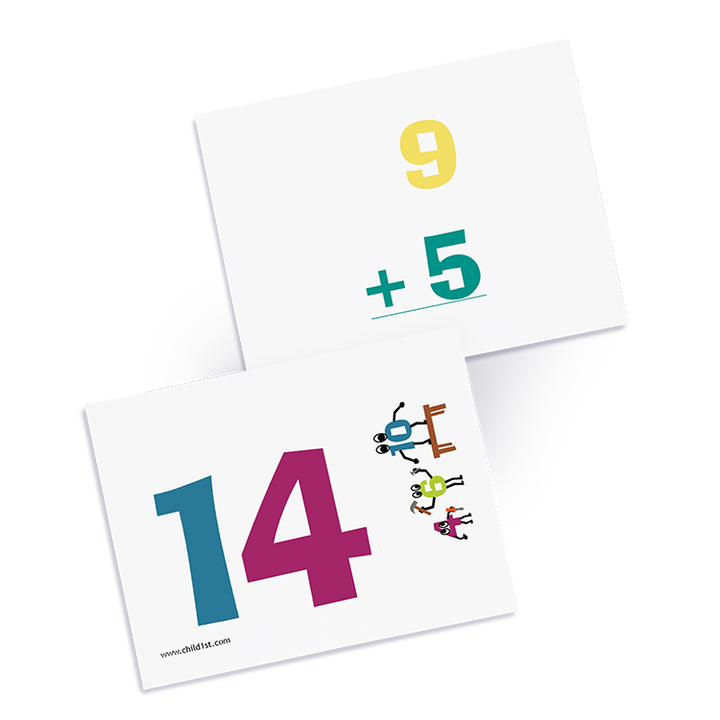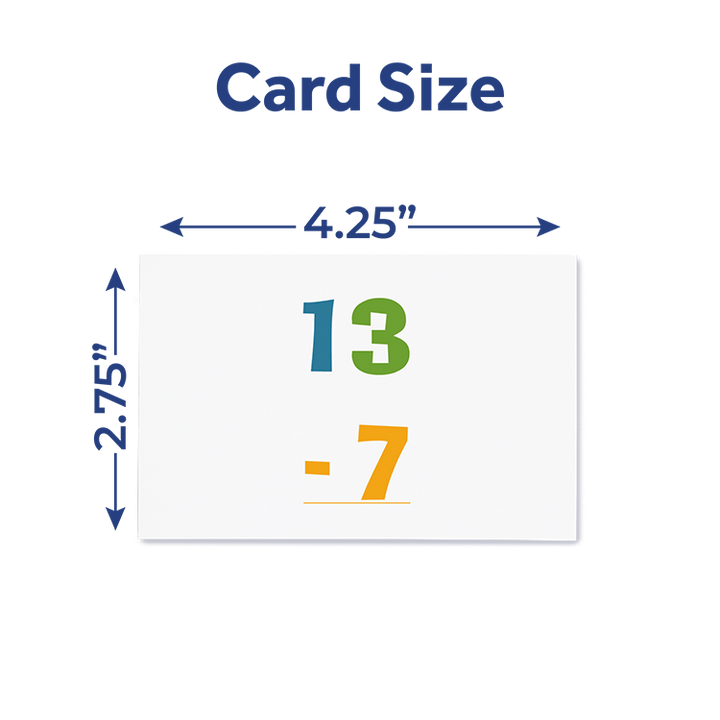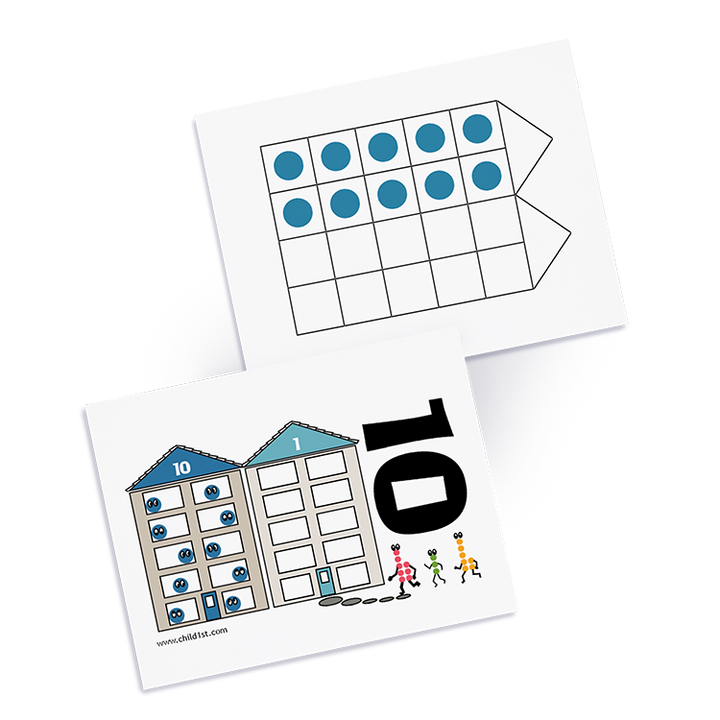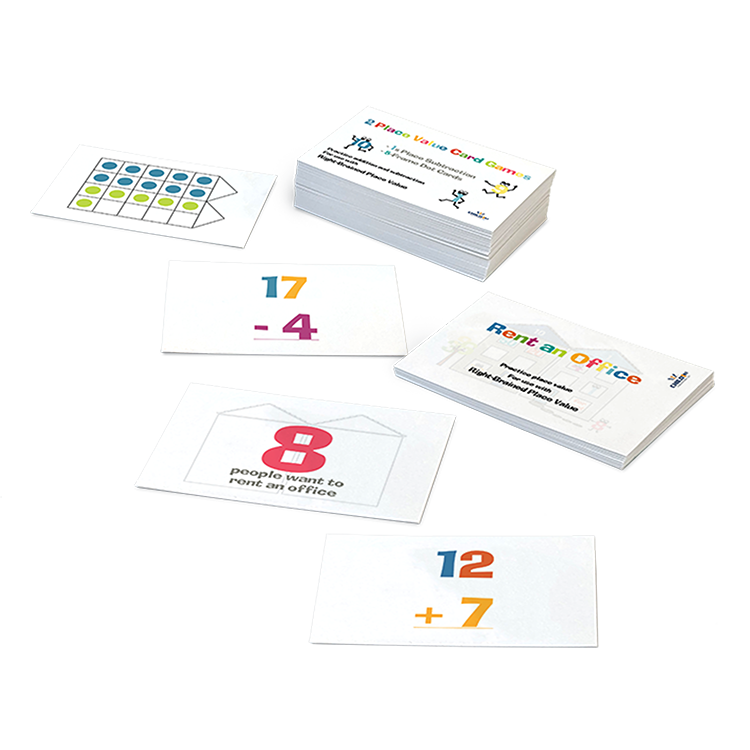Dive into a world of interactive math exploration with the Right-Brained Addition & Subtraction Vol. 2 Games, a vibrant collection of educational resources designed to reinforce key concepts from the corresponding book. This engaging set features three distinct card decks: Adding 1s Cards, Subtracting 1s Cards, and Add & Subtract 10s Cards, each offering unique opportunities for skill-building and reinforcement.
Adding 1s Cards provide an exciting platform for practicing basic addition skills, focusing on sums that involve adding in the 1s place without the need to make a ten. With colorful visuals and self-checking mechanisms, these cards offer an enjoyable and effective way for students to enhance their mathematical fluency.
Subtracting 1s Cards present fundamental subtraction problems that do not require borrowing from the 10s place, allowing learners to develop confidence in solving equations independently. Through hands-on practice and interactive activities, students sharpen their subtraction skills while reinforcing essential concepts.
Add & Subtract 10s Cards offer dynamic opportunities for exploring strategies related to "Make a 10" and "Take from 10," crucial for mastering double-digit addition and subtraction. By engaging with these cards, students deepen their understanding of place value and develop proficiency in applying strategic problem-solving techniques.
Versatile and user-friendly, the Right-Brained Addition & Subtraction Vol. 2 Games can be seamlessly integrated into classroom instruction or used for independent practice. Teachers and students alike will appreciate the intuitive design, which promotes active learning and fosters mathematical growth. With these engaging games, mathematics becomes an exciting journey of discovery, where students build confidence and competence one card at a time.
What’s Included
· 60 full color Adding 1s Cards with two-sided lamination for extra durability
· 60 full color Subtracting 1s Cards with two-sided lamination for extra durability
· 60 full color Add & Subtract 10s Cards with two-sided lamination for extra durability



